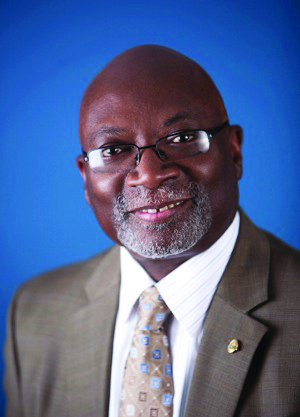By Ernest Logan, President, CSA
When Carmen Fariña was named chancellor, all kinds of speculation ran wild, especially: "Will she get rid of the networks?" Well, folks, she's getting rid of them. For the last five years, I've seen some positive things develop under the 55 networks, but I've continued to worry about doing without superintendents. Superintendents were there by law, but they hovered in the background like ghosts.
In introducing a new school support structure that strengthens superintendents while incorporating some of the best network features, the chancellor has made her most sensible decision to date. Good superintendents are good for schools. They have school leadership backgrounds and finely developed instincts about what really happens in schools.
Their virtual absence hits home hardest when a tragedy strikes at the heart of a school community, a school is abruptly closed or a Principal or AP is suddenly swept up in an unfair investigation. If a Principal is up against the wall, her network leader doesn't have any formal responsibility for her and her superintendent might not know her very well.
There was a bizarre disconnect between support and supervision. The person who knew The Principal best was her network leader, a consultant she hired under a corporate model, to supply the school's instructional, operational and student services supports. By law, superintendents maintained the responsibility to hire and rate the Principal, but they were devalued as "mere educators" and many felt marginalized and barely visited their schools. School leaders were left vulnerable and probably thought about it only when they had a problem and said, "Who do I call?"
Now, there will be no guesswork. The superintendent will be held accountable for helping school leaders improve their school's performance in a way the network leader never was. As with the networks, instructional, operational and student services support will be united. Principals will maintain independence over their budgets and human resources. The finest network talent will move under the superintendent or into a Borough Field Support Center. New Affinity Groups will spur camaraderie. Professional learning communities, like Learning Partners, will foster collaboration across boroughs.
Another disconnect with the network system was geographic. A lot of the networks had schools in three or more boroughs. Community ties to elected officials, community leaders and organizations eroded. Relationships that had once existed between school levels frayed: the pipeline among schools that used to feed into each other, such as elementary into middle schools, began to weaken. Principals often didn't know anything about the school down the block.
Because networks weren't rooted in geography, issues like weather-related disasters, crime and policing, and health emergencies sometimes couldn't be approached effectively at the neighborhood level. For parents, the geographic disconnect was also significant. If they couldn't resolve their child's issue at the school level, say, in Brownsville, Brooklyn, they might have to turn to a network office in Woodside, Queens. This could be baffling.
Often, our Education Administrators and Supervisors navigated a geographic wasteland. A building might contain three separate schools, each part of three separate networks. A Supervisor of Psychology could serve his network school in a building that housed two other schools, but he couldn't walk down the hall and serve the kids in the two others. Instead he might have to travel to two more boroughs. You can't make this stuff up: the cost in money, time and human forbearance was high, but, most of all, the children were getting short-changed.
For schools in low-income areas, the network system often worked least well. Schools that needed the most support sometimes ended out working with the weakest networks. Networks had the same number of staff whether they served 25 schools with 7,000 students or 25 schools with 40,000 students, and whether most of them were high performing or low performing. Now, the neediest schools will get the most support, through a superintendent hand-picked by the chancellor.
That's been the most ironic disconnect of all: The networks, through no fault of their own, weren't set up to provide much accountability to the chancellor. Networks were a complex archipelago of independent islands so remote from Tweed that the chancellor could be held blameless for what happened at the school level. In the end, accountability fell almost exclusively at the schoolhouse door. . . at the feet of the Principal. I'm thrilled that nobody, least of all the chancellor, will be held harmless anymore.#
Ernest Logan is the President, Council of School Supervisors and Administrators. The Council of School Supervisors and Administrators is the collective bargaining unit for 6,100 Principals, Assistant Principals, Supervisors and Education Administrators who work in the NYC public schools and 200 Directors and Assistant Directors who work in city-subsidized Centers for Early Childhood Education.

Leave a comment